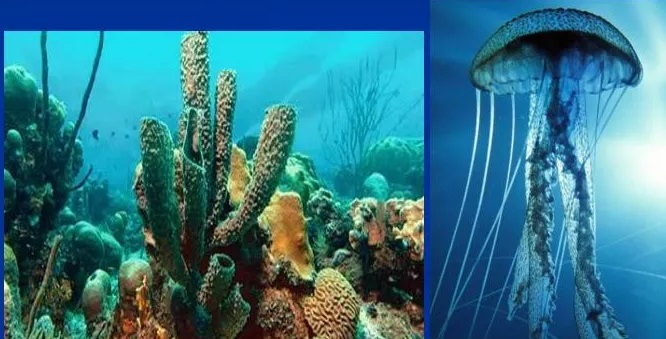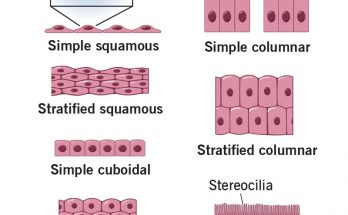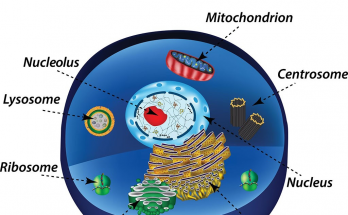To understand the difference between Porifera and Coelenterata, we need to look at these two phyla. Porifera, known as sponges, are simple, filter-feeding organisms found mainly in marine environments. They are characterised by their porous bodies and lack of complex tissues. Coelenterata, encompassing jellyfish, corals, and sea anemones, features a more complex structure with radial symmetry and specialised stinging cells for capturing prey.
Difference Between Porifera and Coelenterata In Tabular Format
| Aspect | Porifera | Coelenterata | |
|---|---|---|---|
| 1 | Body Symmetry | Lack body symmetry, with shapes like encrusting, tubular, or vase-like. | Exhibit radial symmetry, organised around a central axis. |
| 2 | Water Circulation | Feature numerous pores for water flow, with internal chambers lined with choanocytes. | Have a single opening serving as both mouth and anus, with a central gastrovascular cavity. |
| 3 | Cell Layers & Composition | Comprise two cell layers separated by a jelly-like mesohyl. | Possess mesoglea between two cell layers, including epidermis and gastrodermis. |
| 4 | Skeleton Composition | Display diverse skeletal structures, including calcareous and silica spicules. | Lack an exoskeleton but have cnidocytes with nematocysts for prey capture. |
| 5 | Locomotion | Primarily sessile with slow, amoeba-like movements. | Range from sessile to free-swimming, with some like jellyfish medusae drifting in currents. |
| 6 | Reproduction | Reproduce asexually through fragmentation, budding, and gemmules. | Capable of both sexual and asexual reproduction, with variations in life stages. |
| 7 | Level of Organization | Exhibit a cellular level of organisation. | Show a more complex tissue level of organisation. |
| 8 | Opening & Body Structure | Characterised by numerous pores all over their body. | Feature only one opening that serves dual functions. |
| 9 | Habitat and Mobility | Mostly marine and non-motile, often found attached to rocks. | Exclusively marine, varying from solitary to colonial lifestyles, some capable of locomotion. |
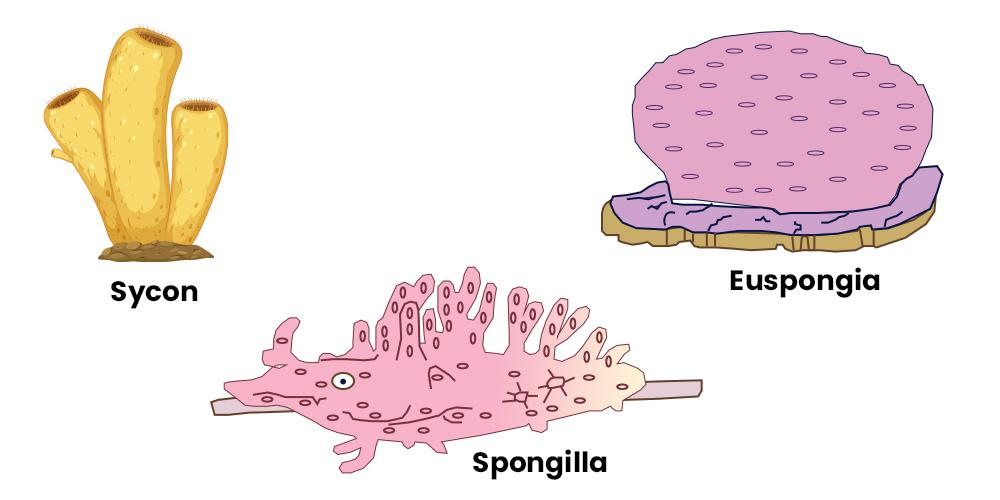 | 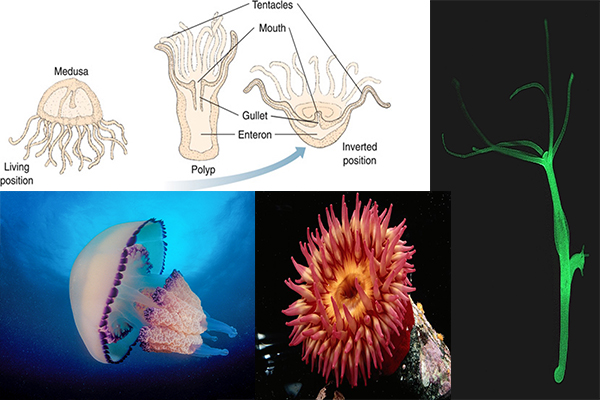 |
Difference Between Porifera and Coelenterata – Explained in Details
1.Difference Between Porifera and Coelenterata in Terms of Body Symmetry
- Porifera- These organisms do not have a defined symmetry, meaning they don’t have a repetitive organisation of their body structure around a central axis. This irregularity leads to a variety of shapes, from flat encrustations on surfaces to complex tubular or vase-like forms. Their lack of symmetry is related to their sedentary lifestyle and filter-feeding mode of nutrition, where water currents are more critical than body orientation.
- Coelenterata- In contrast, Coelenterata exhibits radial symmetry, where their body parts radiate from a central axis like spokes on a wheel. This symmetry is advantageous for their lifestyle, especially for those that are free-swimming, like jellyfish, allowing them to interact with their environment uniformly from all sides.
Also Check – Porifera: Life History and Ecology
2. Difference Between Porifera and Coelenterata in Terms of Water Circulation
- Porifera- Sponges have a unique water flow system facilitated by pores (ostia) that allow water to enter and exit through a larger opening called the osculum. This water flow is critical for their feeding, respiration, and excretion. The water brings in oxygen and nutrients and carries away waste. Choanocytes, or collar cells, line the internal chambers and play a key role in filtering food particles from the water.
- Coelenterata- Cnidarians have a simpler system with a single opening that functions both as a mouth and an anus, leading to a central gastrovascular cavity. This cavity serves multiple purposes- digestion, distribution of nutrients, and even locomotion in some species through the expulsion of water.
3.Difference Between Porifera and Coelenterata in Terms of Cell Layers & Composition
- Porifera- Sponges are diploblastic, having two primary layers of cells (the outer pinacoderm and the inner choanoderm) separated by a non-cellular mesohyl. The mesohyl acts as a gelatinous matrix that supports various cells like amoebocytes, which perform different functions including digestion, reproduction, and secretion of skeletal elements.
- Coelenterata- Similar to Porifera, Coelenterata are also diploblastic but their two cell layers (epidermis and gastrodermis) are separated by mesoglea, a jelly-like substance. This structure supports the body and aids in the distribution of nutrients, but unlike the mesohyl in sponges, it’s typically more gelatinous and less cellular.
4. Difference Between Porifera and Coelenterata in Terms of Skeleton Composition
- Porifera- The skeletal structure in sponges varies widely, from calcareous or silica-based spicules to spongin fibres. These skeletal elements provide structural support and protection, and their composition varies significantly among different sponge classes.
- Coelenterata- Cnidarians do not possess a hard skeleton. Instead, they rely on the hydrostatic pressure of their water-filled gastrovascular cavity for support. Their distinctive feature is the presence of cnidocytes, specialised cells used for defence and prey capture, which contain nematocysts capable of delivering a sting.
5. Difference Between Porifera and Coelenterata in Terms of Locomotion
- Porifera- Sponges are predominantly sessile, meaning they are attached to a substrate and do not move from place to place. However, they can exhibit minor movements at the cellular level, such as changing the configuration of their body pores or slight contractions of their body.
- Coelenterata- This group includes both sessile organisms, like sea anemones, and motile forms, like jellyfish. Motile cnidarians often rely on passive drifting in ocean currents, while some may have limited active swimming capabilities through contractions of their body or tentacles.
6. Difference Between Porifera and Coelenterata in Terms of Reproduction
- Porifera- Reproduction in sponges can be asexual, through means like budding or the production of gemmules (a survival strategy in harsh conditions), and sexual, with the release of eggs and sperm into the water for external fertilisation.
- Coelenterata- Cnidarians exhibit a wide range of reproductive strategies, including both asexual reproduction (e.g., budding in polyps) and sexual reproduction, often with complex life cycles involving alternating polyp and medusa stages.
7. Difference Between Porifera and Coelenterata in Terms of Level of Organization
- Porifera- Sponges represent a more primitive level of organisation, with cells specialised for various functions but not organised into true tissues.
- Coelenterata- Cnidarians have a higher level of organisation, with cells organised into tissues, allowing for more specialised functions and complex behaviours.
